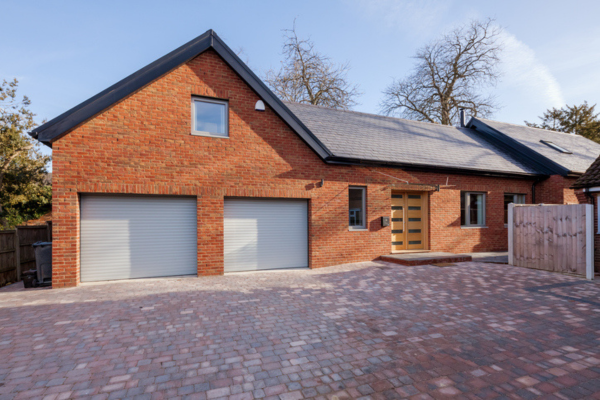
A brick driveway is made from fired clay bricks or concrete pavers laid on a prepared base. This creates a durable, attractive surface suitable for many residential settings.
Best use
Brick and paving driveways suit homeowners looking for a classic look that complements brickwork or landscaping. Pavers offer a wide range of design patterns, with the herringbone pattern especially popular for its strength and visual appeal.
Maintenance requirements
While durable, brick and paved driveways need regular upkeep to stay in good condition:
- Remove weeds and debris regularly from the joints
- Sweep often to keep the surface clean
- Clean with soapy water and a stiff brush when needed, avoiding acidic cleaners that can cause damage
Slope considerations
A minimum slope of 2% is recommended to ensure water drains away properly. While the surface allows some water permeability, accumulated debris can reduce this. On steeper slopes, professional advice is recommended to maintain stability.
Installation process
- Excavate the area to a depth of 200mm to 300mm
- Lay and compact a 150m base layer of hardcore material
- Spread and level fine gravel on top of the base
- Compact the base thoroughly with a plate compactor or roller
- Lay the bricks or pavers tightly together in the chosen pattern
- Brush fine sand into the joints to lock pavers in place
Cost considerations
Installation costs vary depending on materials, design complexity and site conditions. It is advisable to get multiple quotes from reputable contractors to compare pricing.
Advantages
- Wide design options and attractive appearance
- Durable and long lasting when maintained properly
- Individual pavers can be replaced if damaged
Disadvantages
- Installation can be labour intensive
- Initial costs may be higher than some alternative driveway materials





